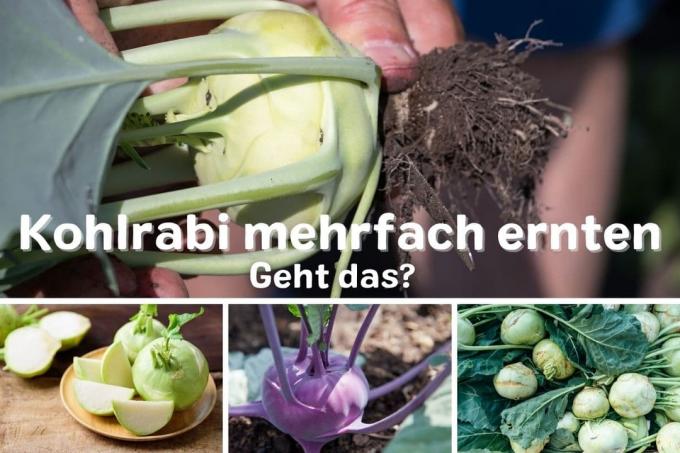
table of contents
- Can kohlrabi be harvested multiple times?
- Does kohlrabi grow back?
- frequently asked Questions
Kohlrabi is not only healthy, but can also be used in a wide variety of dishes. But how often can kohlrabi be harvested and does it grow back after one harvest? We enlighten you.
In a nutshell
- multiple harvests possible with offset sowing
- belongs to the group of biennial plants and in principle grows back
- despite the biennial nature, the vegetable is usually treated as an annual plant
- replanting necessary after harvesting the kohlrabi
Can kohlrabi be harvested multiple times?
Kohlrabi (Brassica oleracea var. gongylodes L.) can be grown from March to August. The harvest takes place with a time delay about two months later. This means that the vegetable has a comparatively short cultivation time of around six to eight weeks, with exactly one plant being produced from each seed. In order to harvest kohlrabi over a longer period of time, it is advisable to sow the seeds several times at intervals of about two weeks. Since the tubers ripen unevenly quickly, they can be harvested in several passes.

tip: For an ideal crop yield, the plants should be pricked out in nutrient-rich soil before planting.
Does kohlrabi grow back?
Kohlrabi is biologically a biennial plant. These are plants that can survive two growing seasons without re-sowing. During these two phases, the kohlrabi grows in two different stages:
- 1. Year: Forms a round to oval tuber with long-stemmed, green leaves
- 2. Year: growth of a stem with a branched yellow inflorescence; from this pods are formed which contain the seeds in the form of black grains.
Since kohlrabi, like other types of cabbage and beets, is sometimes harvested after the first phase, it often has no chance of reaching the second year. The life cycle of the plants has hardly expired and they have to be sown again in the next year, as they will no longer grow back. However, under specific weather conditions, later on in the cold, for example, flowers can form prematurely.

Note: To the Crop rotation To ensure and protect the plants from diseases, kohlrabi should be placed in a bed every four years at the earliest be planted in which cabbage or other cruciferous vegetables such as cauliflower, Brussels sprouts or broccoli have been grown beforehand are.
frequently asked Questions
No, kohlrabi is adapted to the climatic conditions in Germany and can be planted directly in the ground at moderate temperatures. Moving forward is possible, but not necessary.
When the kohlrabi is about the size of a tennis ball, cut off the tuber, including the leaves, by hand with a sharp knife.
Yes, because they remove water from the tuber. The smaller, inner leaves can then be used fresh in the salad; the larger ones can be processed into pesto or sautéed.

